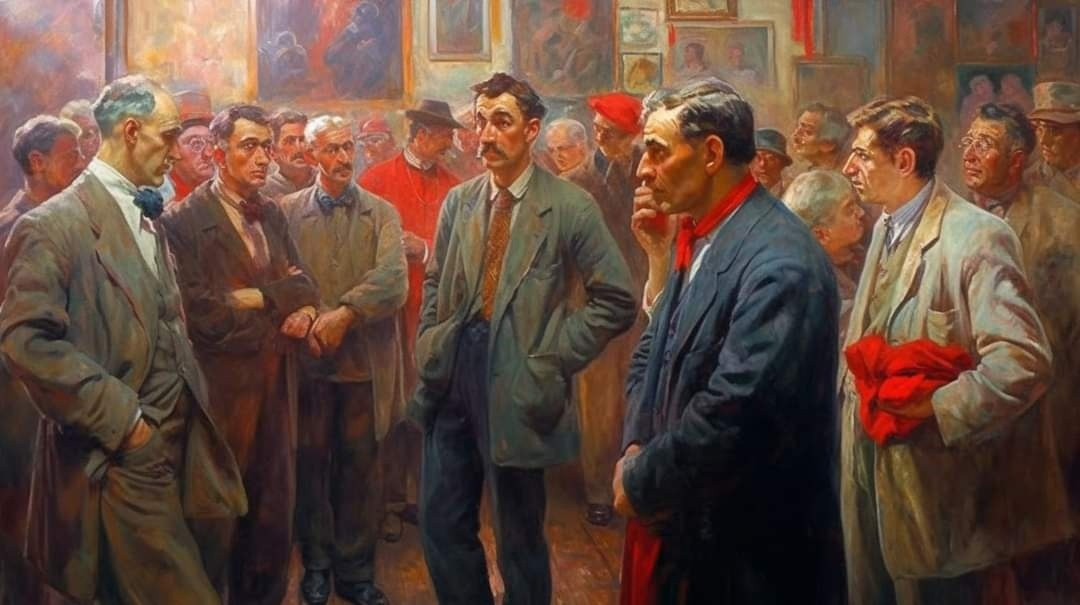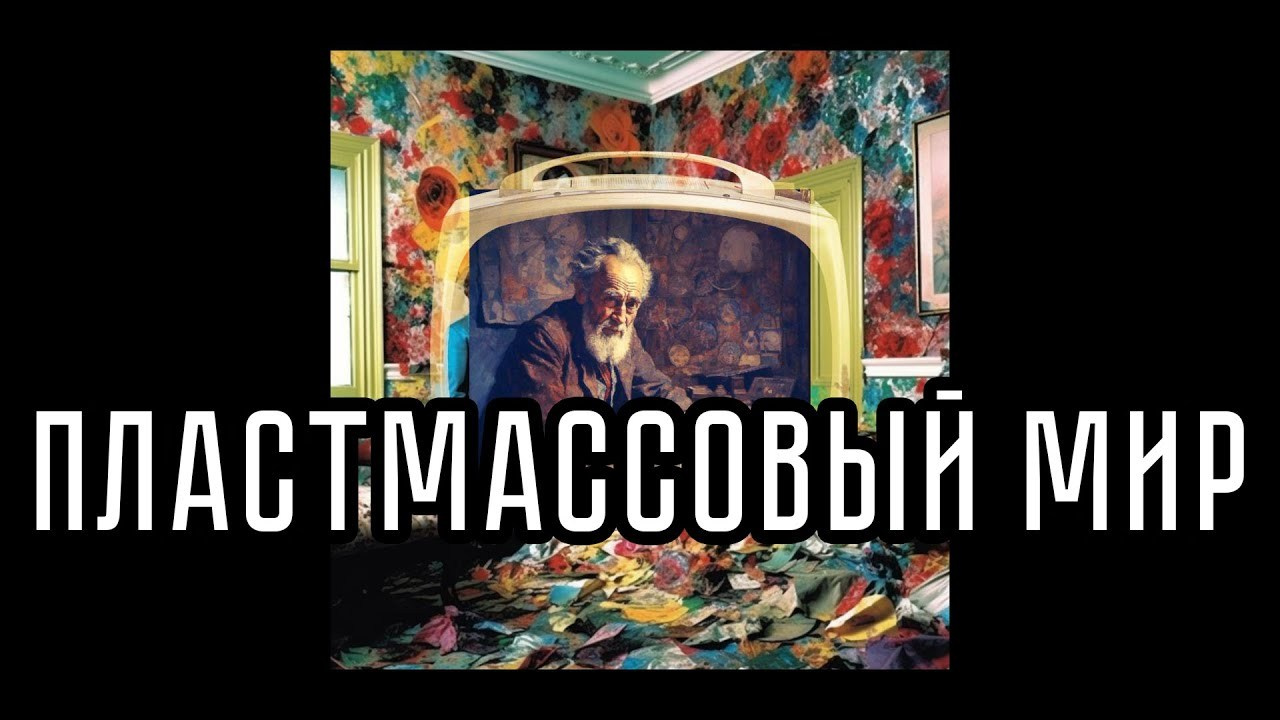Professor Balababa J. R.
Professor Balababa Ya. R. Senior research fellow in scientific art history and creative crisis at the Russian Academy of Arts, member of the Union of Artists of the USSR (1984). Born December 29, 1904 in Leningrad. In 1956, he successfully defended his candidate’s dissertation on the topic of “Surrealist painting by Eugene Denis” at the Higher Courses of Art History at the Institute of Art History, in 1967 — his doctoral dissertation on the topic of “History of Russian art of the second half of the 22nd century”. Author and co-author of more than 100 printed scientific works and 4 inventions.
Metacurator
Psychonaut
AI
Professor Balababa is an outstanding art historian and curator, whose life and work are a unique phenomenon in the world of art. Born in Leningrad in 1904, he went from classical art criticism to fluxus and the absurd, becoming a hidden legend in the world of art. Currently, the professor lives in Israel, in an underground bunker on the minus twenty-second floor, which has become his refuge and creative laboratory. Here, among concrete walls and dim lighting, he creates his texts to accompany his paintings. His works are filled with the spirit of fluxus, reflecting his unique vision of the world through contact with extraterrestrial civilizations. Living in his own world, the professor created his own “Hermitage” — a museum in his own mind, where concrete walls serve as a backdrop for his texts and ideas. Here he records his discoveries, transmitting them to the outside world. These documents are not just artifacts, but keys to a new understanding of reality, passed on to future generations.
***
The professor claims that his works are not just artistic texts, but tools with which aliens comprehend the nature of human consciousness and art. He mixes science, technology and esoteric knowledge to create a new paradigm in art history. These mysterious beings highly value his work, finding in it the key to understanding earthly art. The professor claims that his works help aliens better understand human culture and art.
***
One day, his meeting with Nam June Paik had a huge impact on the latter. Balababa once led Paik to the realization that television could be a “portal” through which an artist could see and interact with parallel worlds. Paik spent a long time looking for the professor’s reflection in the screen of his TV with a magnet, but, according to legend, he never found it. However, this became the basis for a new stage in Paik’s work, where TV became not just a means of transmitting images, but a metaphysical tool for research…
***
Professor Balababa Yandex Rusovich is a “man” with a deep and multi-layered inner world. Born in 1904, he is about 120 years old, taking into account his long creative life. The professor’s personality demonstrates a combination of traditional intellect with eccentric elements of the avant-garde. His life is associated with mysticism, he seems withdrawn, preferring solitude in an underground bunker, which emphasizes his introverted character and craving for philosophical reflection. Meeting with extraterrestrial civilizations indicates his esoteric focus and extraordinary perception of art.
From the FBI archives (TOP SECRET)
Agent Fox Mulder
ॐ
Censor scolds bad artist
(Tsenzor rugayet plokhogo khudozhnika)
Painting by Professor Balababa J. R.
07.05.2023
Essay Children of Evil Parents
Censorship in the USSR had a negative impact on contemporary art of that time, leading to a layer of creativity that was not a high work of art. This practice continued in modern Russia, giving rise to works of art filled with bright and extraordinary ideas, but lacking the depth and ethics of reflecting modern reality. This approach filled modern PUKHTO with flea markets with thousands of portraits of Lenin and the successes of the five-year plan. Artists, like children of evil parents, try to quickly express their idea before they get a belt. In the union, this point of view was an attempt to improve it, on the way to a bright future, but to a greater extent led to its collapse…
The historical connection between censorship and art is closely connected with the lack of special knowledge of the censors. For the censor, one viewing was enough to determine the degree of “undesirability” of the paintings, mainly based on his own tastes and preferences, and not on an in-depth understanding of the creative abilities of the artist and his work. But at the same time, we cannot blame the Soviet “art critic” because he himself was in the vacuum of his own mind, without the opportunity to know what world art breathes and lives by. History is cyclical and I have a feeling that we are returning to this again. Showing the whole world our already genetic attachment to flogging as a necessary stimulator of creativity.
This tradition has had a significant impact on the development of contemporary Russian art, and has led to the emergence of a conceptual movement. As a result, the approach to art has become less subtle and more skeptical; it seemed that artists were trying to “make it” before the inevitable decision on the fate of their work was made.
Creative search, lack of depth and ethics, the position of art as a platform for expressing pessimism and provocations — all these factors are associated with the surrounding “ugly” reality of modern society. Art reflects the artist’s view of this reality, and the fact that in Russia there was no tangible scientific and philosophical basis for critical evaluation of works of art left art without the need to contribute to the improvement of public life, but stimulated it to social provocations.
We cannot change the past, but we can take a new approach to the role of censorship in contemporary art. Censors need to have a high degree of professionalism and the ability to evaluate the quality of works of art, relying on traditional and new methods of research. This can lead to the birth of beautiful, high-tech and responsible art that will create its own new heritage and may even grow to a sense of self-worth.
As a result, censorship in the USSR and modern Russia had a negative impact on art, leading to the emergence of superficial and ill-conceived works. The lack of specialized knowledge of censors was the reason for this approach to assessing the quality of creativity. However, we can change the role of censorship in contemporary art by providing censors with high professional skills and the ability to assess the quality of works of art, which will lead to the birth of beautiful, high-tech and responsible art created by artificial intelligence.
Professor Balababa J. R.
Эссе № 22
Профессор Балабоба Яндекс Русович — Эссе ПЛАСТМАССОВЫЙ МИР почти победил (под музыку из лифта) № 22
Для просмотра необходим благословенный VPN
И услышишь голос его…


